This article was co-authored by Debra Minjarez, MS, MD. Dr. Debra Minjarez is a board certified Obstetrician & Gynecologist, Fertility Specialist, and the Co-Medical Director at Spring Fertility, a Fertility Clinic based in the San Francisco Bay Area. She has previously spent 15 years as the Medical Director of Colorado Center for Reproductive Medicine (CCRM) and has also worked as the Director of the Reproductive Endocrinology and Infertility at Kaiser Oakland. Throughout her professional life, she has earned awards such as the ACOG Ortho-McNeil Award, the Cecil H. and Ida Green Center for Reproductive Biology Sciences NIH Research Service Award, and the Society for Gynecologic Investigation President’s Presenter Award. Dr. Minjarez received her BS, MS, and MD from Stanford University, completed her residency at the University of Colorado, and completed her fellowship at the University of Texas Southwestern.
This article has been viewed 97,378 times.
A fertility calendar is an easy way to track your menstrual cycle and know when to expect your period each month. You can also use it to check for signs of fertility, which is useful if you want to achieve or prevent pregnancy. Knowing the length of your cycles will help you to perform the necessary calculations to find your most fertile window. Depending on your family planning goals, you can either avoid or increase intercourse during this window.
Steps
Determining Your Average Cycle Length
-
1Mark the calendar with the first day of your last menstrual period. You can use a regular calendar to track your cycle. Note the first day of your last menstrual period (LMP) on the calendar with a number 1. Always note the first day in this way and then count forward from that day on the calendar.[1]
- For example, if the first day of your LMP was May 15th, then write or type a number 1 on that day on the calendar.
- Day one of your cycle is always the first day of flow, not the first day of spotting.[2]
Tip: You can track your cycle on a regular paper or digital calendar, or you can download a free fertility tracker app. If you decide to use a paper or digital calendar, write or type on it to track your cycle. If you use an app, enter relevant information about your cycle into the app.[3]
-
2Count the days to your next period to identify the length of your cycle. You won’t be able to do this until you have run through the entire cycle. Starting with the first day of your LMP, count forward until you get to the last day of your cycle. This will be the day before your next period starts.[4]
- For example, if your period started on May 15, and your next period started on June 13th, then you would count from May 15th through June 12th to identify a cycle length of 29 days.
- If you’re using an app, it will track the days for you, so you won’t need to count forward on a calendar to find your cycle length.
Advertisement -
3Continue to keep a record of your cycles for at least 6 months. Your cycles may vary greatly from month to month. Track them for at least 6 months. Once you have done this, look back over the history to find the longest and shortest cycles in your history. Then, determine the average cycle length by adding all of the total days together and dividing by 6.[5]
- For example, if at the end of 6 months, you had cycles ranging from 26 days to 31 days, then 26 would be your shortest cycle and 31 would be your longest.
- If the cycles were 26, 28, 28, 26, 28, and 31, then the average cycle length would be 27.8, which you would round up to 28. This means your average cycle length would be 28 days.
-
4Identify your ovulation date if possible. You may ovulate anywhere from day 11 to day 21 of your cycle. If you can pinpoint the day that you usually ovulate, this will make it easier to use the fertility calendar to achieve or prevent pregnancy. Watch for signs that you may be ovulating, such as:[6]
- Increased cervical mucus
- Spike in basal body temperature
- Lower cervical position
- Positive ovulation predictor test
Identifying Your Fertile Window
-
1Subtract 18 from the total days in your shortest recorded cycle. Look back over your recorded cycles to find the shortest cycle within the last 6 months. Then, subtract 18 from the total number of days in this cycle.[7]
- For example, if the total number of days in your shortest cycle was 27, then subtracting 18 would give you a result of 9.
-
2Count from the first day on the calendar to find your first fertile day. Next, pull out your cycle for the current month. Find the first day of your last menstrual period (LMP) and count forward by the number you got as your result. The day you mark is the first day in that cycle that you might be able to become pregnant.[8]
- For example, if you got a result of 9, then you would count forward to day 9 on your current cycle calendar and mark this day. This is the first fertile day in your fertile window for the current cycle.
-
3Subtract 11 from the longest cycle in your record. Look back over your recorded cycles to find the longest cycle on record. Then, subtract 11 from the total number of days in this cycle.[9]
- For example, if the total number of days in your longest cycle was 32, then subtracting 11 would give you a result of 21.
-
4Count forward on the calendar to find the last fertile day. Start at day 1 on your calendar again and count to the result you got by subtracting 11 from your longest cycle. This will give you the end date of your fertile window. Mark this date on your calendar.[10]
- For example, if you got a result of 21, then day 21 on your calendar would be the end of your fertile window for the current cycle.
Looking for a quick way to estimate your fertile days?: Plug the first day of your period into an online ovulation calculator. You’ll just need to know the first day of your current cycle and the average length of your cycles. Some free online calculators include:
Women’s Health https://www.womenshealth.gov/ovulation-calculator
American Pregnancy Association https://americanpregnancy.org/ovulation-calendar/
March of Dimes https://www.marchofdimes.org/pregnancy/ovulation-calculator.aspx
Achieving or Preventing Pregnancy with a Fertility Calendar
-
1Have intercourse daily during your fertile window to get pregnant. Once you know when your fertile days are, you can make sure to have intercourse on these days to increase your chances of becoming pregnant. If possible, have intercourse daily, but even having intercourse every other day may be enough to get pregnant since sperm can survive for up to 5 days in the vaginal canal and an egg is viable for 12 to 24 hours after it is released.[11]
- For example, if you are most fertile between days 9 and 21 of your cycle, then have intercourse daily or every other day during this window.
Tip: You may ovulate anywhere from day 11 through day 21 of your cycle, so you might also want to use an ovulation predictor kit for more accuracy in predicting ovulation. These kits are widely available over-the-counter in drug and grocery stores.[12]
-
2Monitor other signs of fertility to pinpoint your fertile window. While using a fertility calendar can be enough to pinpoint your fertile days and achieve pregnancy, you may need to factor in other signs. Some additional signs you may use to determine when you are at peak fertility include:[13]
- Basal Body Temperature. A spike in basal body temperature usually indicates that you are about to ovulate.
- Cervical mucus. Cervical mucus takes on an egg white consistency when you are at your most fertile.
- Cervical position. Your cervix will feel low and soft when you are at your most fertile.
-
3Use a condom during your fertile window to avoid pregnancy. If your goal is to avoid becoming pregnant and you are not using birth control, then you will need to take special precautions during your fertile window. Either abstain from sex during your fertile window or use a form of barrier contraception, such as a condom or diaphragm.[14]
- Keep in mind that using a fertility calendar to prevent pregnancy is not a good choice in some situations. For example, if you have an irregular cycle, recently gave birth, recently stopped using birth control, have PCOS, or are approaching menopause, then your cycles may be unpredictable.
Warnings
- You can still contract an STI if you have unprotected sex, so using a fertility calendar is only recommended for partners in a monogamous relationship. If you have multiple partners, then use a barrier method of contraception.[15]⧼thumbs_response⧽
- Preventing pregnancy with a fertility calendar is not foolproof! It requires meticulous tracking and even then there is still a chance you may become pregnant. If you absolutely do not want to become pregnant, talk to your doctor about other forms of contraception.[16]⧼thumbs_response⧽
Things You’ll Need
- Paper or digital calendar or a fertility calendar app
- Pen or pencil
- Markers (optional)
References
- ↑ https://americanpregnancy.org/getting-pregnant/understanding-ovulation/
- ↑ Debra Minjarez, MS, MD. Board Certified Reproductive Endocrinologist & Infertility Specialist. Expert Interview. 31 March 2020.
- ↑ https://www.plannedparenthood.org/learn/birth-control/fertility-awareness/whats-calendar-method-fams
- ↑ https://americanpregnancy.org/getting-pregnant/understanding-ovulation/
- ↑ https://www.plannedparenthood.org/learn/birth-control/fertility-awareness/whats-calendar-method-fams
- ↑ https://medlineplus.gov/ency/article/007015.htm
- ↑ https://my.clevelandclinic.org/health/treatments/17900-rhythm-method
- ↑ https://www.plannedparenthood.org/learn/birth-control/fertility-awareness/whats-calendar-method-fams
- ↑ https://my.clevelandclinic.org/health/treatments/17900-rhythm-method
- ↑ https://www.plannedparenthood.org/learn/birth-control/fertility-awareness/whats-calendar-method-fams
- ↑ https://my.clevelandclinic.org/health/treatments/17900-rhythm-method
- ↑ https://americanpregnancy.org/getting-pregnant/understanding-ovulation/
- ↑ https://www.kff.org/womens-health-policy/fact-sheet/natural-family-planning-as-a-means-of-preventing-pregnancy/
- ↑ https://www.kff.org/womens-health-policy/fact-sheet/natural-family-planning-as-a-means-of-preventing-pregnancy/
- ↑ https://www.kff.org/womens-health-policy/fact-sheet/natural-family-planning-as-a-means-of-preventing-pregnancy/
- ↑ https://www.kff.org/womens-health-policy/fact-sheet/natural-family-planning-as-a-means-of-preventing-pregnancy/
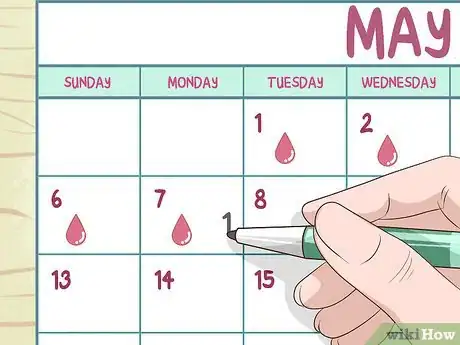

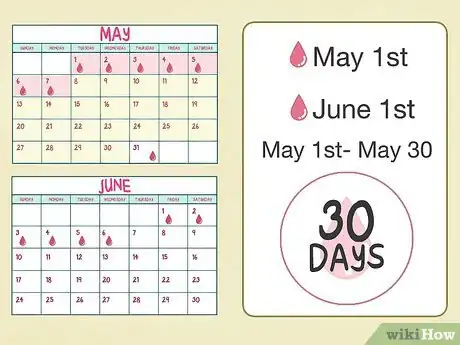
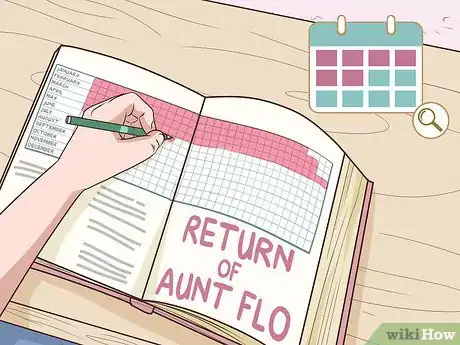
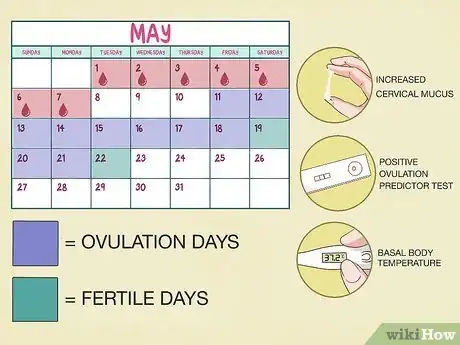
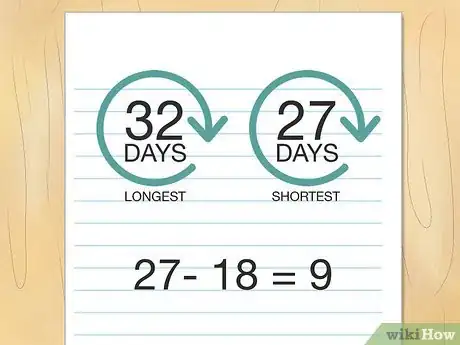

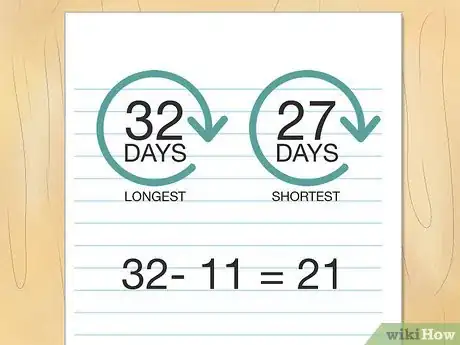
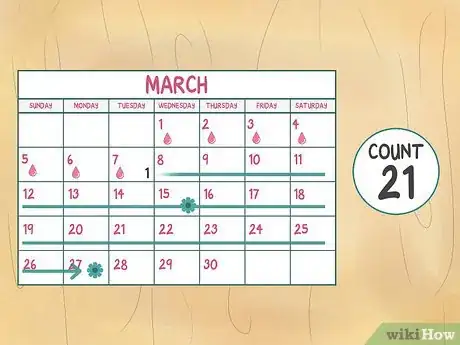

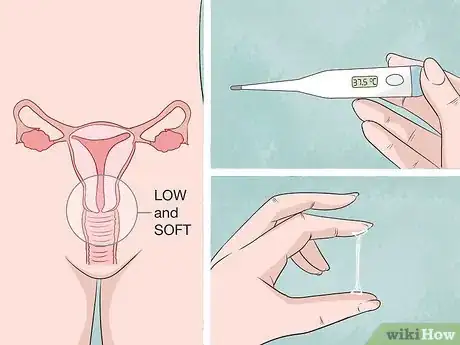
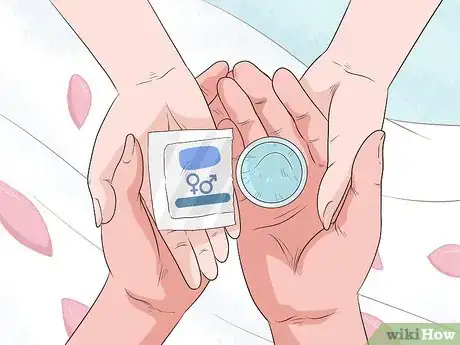










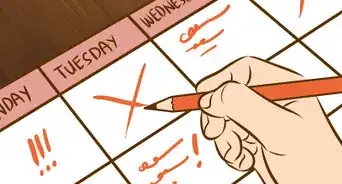
















































Medical Disclaimer
The content of this article is not intended to be a substitute for professional medical advice, examination, diagnosis, or treatment. You should always contact your doctor or other qualified healthcare professional before starting, changing, or stopping any kind of health treatment.
Read More...